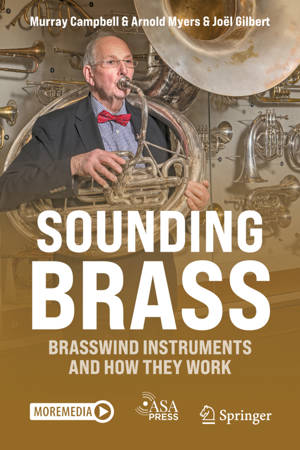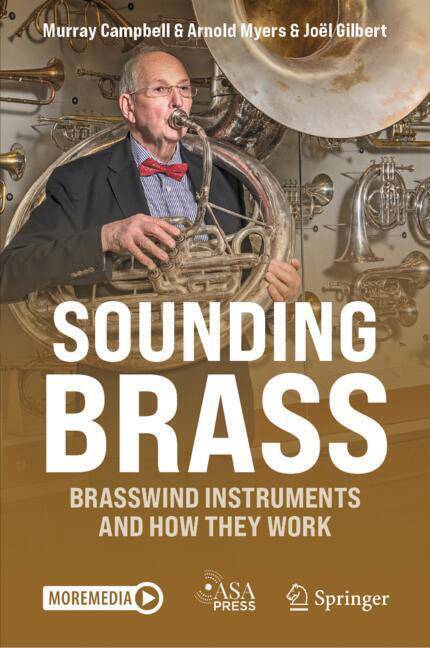
- Afhalen na 1 uur in een winkel met voorraad
- Gratis thuislevering in België vanaf € 30
- Ruim aanbod met 7 miljoen producten
- Afhalen na 1 uur in een winkel met voorraad
- Gratis thuislevering in België vanaf € 30
- Ruim aanbod met 7 miljoen producten
Zoeken
Sounding Brass
Brasswind Instruments and How They Work
Murray Campbell, Arnold Myers, Joël Gilbert
Hardcover | Engels
€ 45,95
+ 91 punten
Omschrijving
A lone bugler sounds the Last Post at a Festival of Remembrance. Overlapping horn arpeggios conjure up the flowing waters of the Rhine in Wagner's opera "Das Rheingold". Seventy-six trombones lead the big parade; trumpets sound ceremonial fanfares, and power the horn sections in jazz and funk bands. The sounds of brass instruments enrich many of our most inspiring musical experiences. But what defines a "brass instrument"? How is a stream of air blown through a small gap in the player's lips transformed into a sound which fills a concert hall? When did brass instruments originate, and how did they evolve into the instruments of the modern orchestra? These are some of the questions addressed in this book. The authors, professional scientists but also experienced brass players, explain how recent research has illuminated our understanding of brass instruments. The presentation is aimed at a general readership, including players, teachers, and lovers of all types of music. No mathematical background is assumed. Descriptions of many experiments on brass instruments carried out by the authors and others bring out the musical significance of the results. A novel approach to the systematic classification of brass instruments is outlined and graphically illustrated. Separate chapters are devoted to trumpets and related instruments, horns, trombones, tubas, brass instruments with toneholes, and instruments from antiquity including the Celtic carnyx. The final chapter reviews the application of electronic enhancement techniques to brass instruments. The book is generously illustrated with colour photographs, musical examples, and explanatory figures.
Specificaties
Betrokkenen
- Auteur(s):
- Uitgeverij:
Inhoud
- Aantal bladzijden:
- 258
- Taal:
- Engels
Eigenschappen
- Productcode (EAN):
- 9783031867347
- Verschijningsdatum:
- 21/06/2025
- Uitvoering:
- Hardcover
- Formaat:
- Genaaid
- Afmetingen:
- 165 mm x 236 mm
- Gewicht:
- 594 g

Alleen bij Standaard Boekhandel
+ 91 punten op je klantenkaart van Standaard Boekhandel
Beoordelingen
We publiceren alleen reviews die voldoen aan de voorwaarden voor reviews. Bekijk onze voorwaarden voor reviews.








